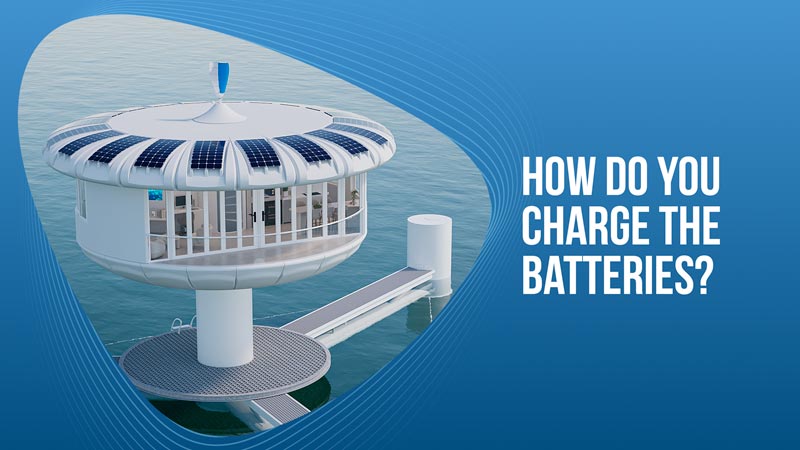
Hey everyone, welcome to the SeaPod and welcome to Pod life!
Another question we get a lot is: “How do you charge your batteries on the SeaPod?”
Right now, we’re primarily using solar panels. Our newest Deepwater Model has 36 square meters of curved panels. Although these new panels are slightly less efficient than the current ones, there are even more efficient models available now. So, we’ll definitely upgrade in the future.
It’s fascinating how quickly solar technology is advancing. The costs are decreasing, efficiency is increasing, and production rates are climbing. When I was young, solar panels seemed like a futuristic dream with prohibitive costs. Now, high-quality panels are surprisingly affordable, costing just a few hundred dollars each. The real challenge, however, lies in storing the energy they generate.
We store our solar energy in batteries, but we’re also exploring wind power systems. We’ve been in discussions with various manufacturers and have some custom solutions in mind that could revolutionize wind power design for floating homes. These innovations won’t work for most houses, but due to the unique geometry of the SeaPod, we think we can implement them in a very interesting way.
Being on the water, we also have the constant movement of waves, which is another potential energy source. We’re partnering with WITT Energy, a brilliant company with a device that generates power from six degrees of motion, back and forth, left and right, up and down. This device can collect energy from all these different motions and convert it into electrical energy. We’re excited to experiment and test this technology, as it could allow us to go beyond just using solar power.
Solar will likely remain our primary power source for many years, but having alternative energy options is crucial. In the tropics or any other location, we always experience a few days of rain or clouds. During those times, having a buffer of a few days’ worth of energy storage is essential. We’ve only run out of power once in the last six months, and in that case, we just turned on the backup generator. However, having additional options like Wave Energy Conversion (WEC) will significantly supplement our power supply.
Right now, our batteries are typically fully charged by 11:30 in the morning, leaving us with five to six hours of excess power generation. Currently, this surplus energy is wasted, so we could explore options like Bitcoin mining to put it to good use.
That’s it for today! I hope you’re having a great day. Enjoy the rest of it, and we’ll talk to you soon.
Explore more:
–SeaPod Lifestyle
–Customer Testimonial
–Ocean Builders Instagram














